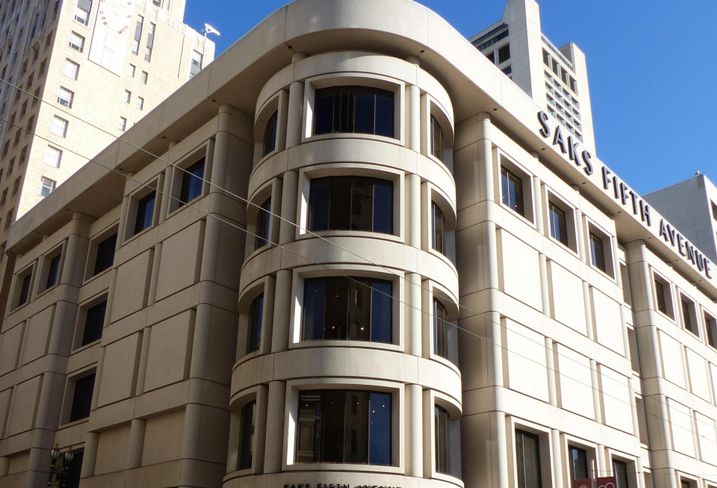San Francisco's Union Square Primed For A Retail Revival
Saks Fifth Avenue’s impending departure from its Union Square storefront on May 10 signals the end of an era. But a slew of new retail openings in the neighborhood indicates a new one is beginning.
In the first quarter, overall vacancy in Union Square was up to 22.8%, compared to 7.6% citywide. Despite the higher rate, an uptick in tenant touring indicates national and international retailers see potential in the market, according to Cushman & Wakefield.
An 11K SF Nintendo store opens May 15. Ross is set to open at 901 Market St. Shoe Palace is heading to Geary Street, and B. Patisserie will take over the Miller & Lux Provisions space.
A new local ordinance could further boost activity in the area.
On April 22, the San Francisco Board of Supervisors unanimously passed legislation easing restrictions on so-called formula retail to speed up permitting along Van Ness Avenue. The rule still needs a signature from Mayor Daniel Lurie.
Formula retailers, defined as chain stores with 11 or more locations, require conditional use authorization as a result of a 2007 proposition meant to support small businesses and preserve mom-and-pop shops.
It can take up to 18 months to secure that approval. With the additional time needed for build-out, landlords have a hard time attracting formula retail tenants.
“Van Ness is a corridor in crisis, and outdated rules have held it back for too long. Today, more than 50% of storefronts north of Redwood Street are sitting vacant, creating these large, visible gaps on one of our city's most heavily trafficked corridors,” Supervisor Stephen Sherrill said in a statement.
The legislation is meant to modernize the planning code and address an economic reality the area has struggled with since the 1970s. Namesake car showrooms that used to populate the area relocated to the suburbs, leaving Auto Row with vacant storefronts. City planning prioritized car traffic over pedestrians, diminishing the foot traffic that could have sustained new businesses.
The pandemic exacerbated the trend as vacancy rates hit historic highs.
Blair Heath owns 1700 Van Ness Ave., a former car dealership with 12K SF of retail space that was occupied by Staples until 2022.
“The problem is big boxes aren't interested,” Heath said.
“If they can't get in and build out, it affects landowners. If they change this law and shorten the time frame, it will spike interest,” Heath said.
Van Ness Avenue is a high-traffic north-south artery, part of the 101 freeway that connects to the Golden Gate Bridge.
Some community members worry that easing restrictions on formula retail will displace small businesses. However, the new legislation applies only to the Van Ness corridor, with a narrow provision to accommodate a Safeway grocery store in Fillmore.
Polk Street, which runs parallel to Van Ness Avenue, is known for its high concentration of small, locally owned businesses. In 2019, the city issued design guidelines to discourage uses that displace local businesses.
While brokers and owners are excited about the possibilities of the new law, Sharon Ng, a community planner with Chinatown Community Development Center, urged caution with the passage of the new legislation.
“We hope that the conditional use process continues to be upheld elsewhere, and that the removal of conditional use requirements on Van Ness Avenue will not serve as a catalyst for changes in communities like ours,” she said in a letter to the supervisors.
The legislation is set to go into effect 30 days after Lurie signs it, which could be as soon as Friday.

